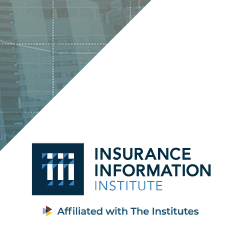
By Max Dorfman, Research Writer, Triple-I
Insurers are expected to post an underwriting loss in 2022, following four years of modest underwriting profits, according to a panel at the Triple-I’s Joint Industry Forum.
The panel was introduced by Paul Lavelle, head of U.S. national accounts for Zurich North America, who noted that the insurance landscape has dramatically changed over the past year.
“The biggest concerns for the world economy are rapid inflation, debt crisis, and the cost of living,” Lavelle said in his opening remarks. “I think that’s why, we as an industry, need to pull this together, and deal with all the variables.”
The panel consisted of Dr. Michel Léonard, Triple-I chief economist and data scientist; Dale Porfilio, Triple-I chief insurance officer; and Jason Kurtz, principal and consulting actuary for actuarial consultant Milliman Inc.
“Inflation overall has gone up and replacement costs have come down,” Léonard said in his initial remarks. “Growth has been challenging because of federal reserve policy that has brought the economy to a halt. Most growth has been disappearing in homeowners, a bit on the commercial real estate side, and on the auto side.”
Porfilio said the rise in loss trends across the insurance industry reveals an underwriting loss, with a projected combined ratio of approximately 105 in 2022. The combined ratio represents the difference between claims and expenses paid and premiums collected by insurers. A combined ratio below 100 represents an underwriting profit, and a ratio above 100 represents a loss.
The 2022 underwriting loss comes after a small underwriting profit from 2018 through 2021, at 99. However, underwriting results are expected to improve as the industry moves forward.
“The results don’t look like the prior years,” Porfilio said. “The core underwriting fundamentals are concerning. However, after a poor result in 2022, we do expect some improvement in 2023 and 2024.”
Still, commercial lines remain relatively successful.
“In the aggregate, commercial lines are relatively outperforming personal lines,” said Kurtz. “That was the case in 2021 and we expect that to be the case in 2022 and through our forecast period of 2024.”
This includes workers compensation, which is closing in on eight years of underwriting profits, according to Kurtz.
On the personal auto line, gains from 2020 have been changed to the biggest losses in two decades.
“Personal auto is very sensitive to supply and demand,” Léonard said. “In the last 24 months, there’s been a historic swing in prices, and particularly the used auto side. It’s all about supply and demand. Those prices increased 30 to 40 percent year-over-year. Recently, though, prices have come down a bit.”
“The industry lived through high profitability in 2020 due to less drivers,” Porfilio added. “Fourteen billion was returned to customers that year.”
However, due to increased driving and reckless driving, the loss ratios have gone up.
The combined ratio in 2021 stood at 101, and in excess of 108 in 2022, according to Porfilio. Still, loss trends are expected to return to normal in 2023 and 2024.
Interest rates have also affected homeowners lines.
“The federal policies have been punishing growth,” Léonard said.
“Underlying loss pressure and Hurricane Ian have created challenging results,” Porfilio added.
However, the hard market has caused growth of 10 percent in 2022, partially due to exposure agreements, as well as rate increases.
The combined ratio for 2022 is expected to be around 115, dropping to approximately 106 in 2023, before an expected decrease to around 104 percent in 2024.
On the commercial auto side, the panelists predict an underwriting profit with a combined ratio of 99 in 2021, but there was a four-point loss in 2022. This is expected to improve in 2023, with a forecast ratio of 102, and 101 in 2024.
On the commercial property lines, the markets are facing shortages of steel, glass, and copper, according to Leonard, with labor challenges contributing to low-to-mid-double-digit percentage time increases to some tasks.
“One of the most important factors in this is labor. It’s very unlikely that labor will go back to where it was,” Léonard said. “We’ve estimated that it will take 30 percent longer for repairs, rebuild, and construction, and five percent in terms of cost.”
However, Kurtz said that the net combined ratio for commercial property markets is projected to be approximately 99.1 in 2022, a small underwriting profit in spite of losses tied to Hurricane Ian. For 2023, the combined ratio is expected to be roughly 94 and 92 in 2024.
“We are anticipating further rate increases and further premium growth,” Kurtz added.
Indeed, insurers continue to adapt to these new challenges. Although 2022 is predicted to result in small losses, the industry continues to evolve.
As Lavelle said in his introduction, “Insurance companies are no longer able just to assess the risk, collect the premium, and pay the loss. We’re being looked at to come up with answers.”




